Tesla Model 3 vs Renault Scénic – Differences & prices compared
Compare performance, boot space, consumption and price in one view.
Find out now: which car is the better choice for you – Tesla Model 3 or Renault Scénic?
The Tesla Model 3 (Hatchback) comes with a Electric engine and Automatic transmission. In comparison, the Renault Scénic (SUV) features a Electric engine with Automatic transmission.
When it comes to boot capacity, the Tesla Model 3 offers 594 L, while the Renault Scénic provides 545 L – depending on how much space you need. If you’re looking for more power, decide whether the 627 HP of the Tesla Model 3 or the 220 HP of the Renault Scénic suits your needs better.
In terms of consumption, the values are 13.20 kWh per 100 km for the Tesla Model 3, and 16.60 kWh for the Renault Scénic.
Price-wise, the Tesla Model 3 starts at 34300 £, while the Renault Scénic is available from 34600 £. Compare all the details and find out which model fits your lifestyle best!
In the battle between the Renault Scénic and the Tesla Model 3, practicality meets innovation. The Scénic offers an impressive amount of interior space and versatility, making it an ideal choice for families, while the Model 3 captivates with its electric performance and cutting-edge technology. Ultimately, the choice between these two vehicles reflects the balance between traditional utility and modern sustainability.
Tesla Model 3
The Tesla Model 3 stands out in the electric vehicle market with its sleek design and impressive performance capabilities. It offers a seamless driving experience that combines advanced technology with minimalistic interiors, creating a futuristic feel on the road. Additionally, its range and charging infrastructure make it a practical choice for both city commuting and longer journeys.
details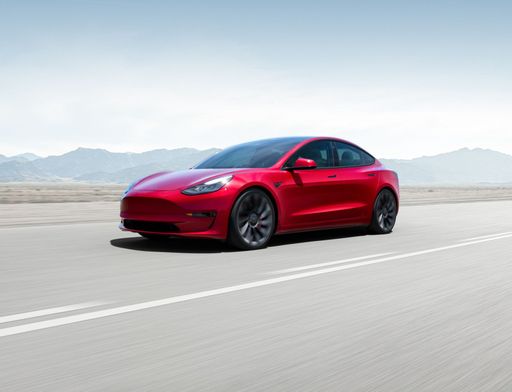 @ tesla.com
@ tesla.com
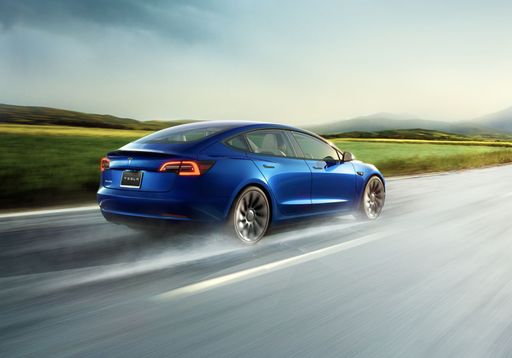 @ tesla.com
@ tesla.com
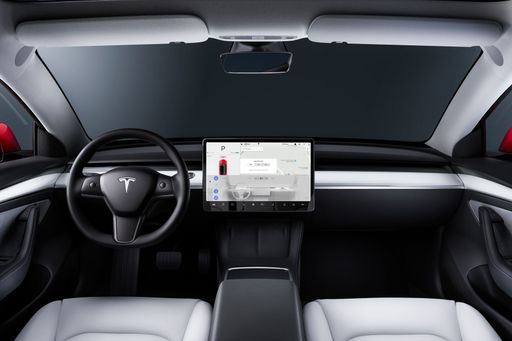 @ tesla.com
@ tesla.com
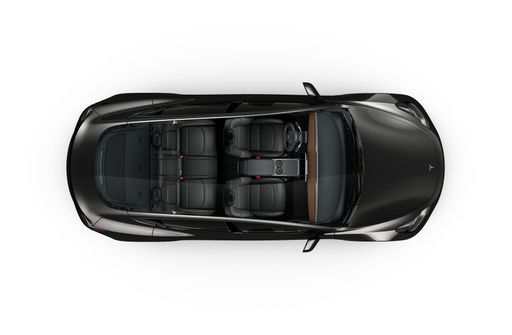 @ tesla.com
@ tesla.com
Renault Scénic
The Renault Scénic, with its distinctive design, captures attention through its sleek and modern aesthetic. Its interior is thoughtfully crafted, offering ample space and comfort for family travel or long journeys. The Scénic stands out with a strong emphasis on practicality, making it an ideal choice for those seeking both style and functionality in a vehicle.
details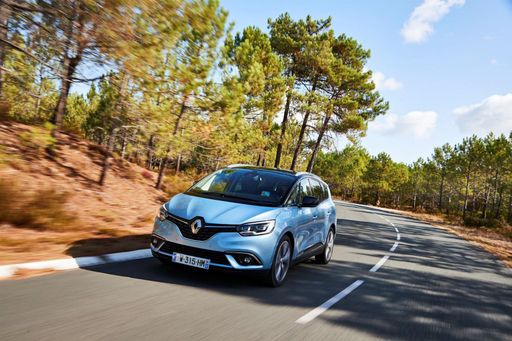 @ Renault
@ Renault
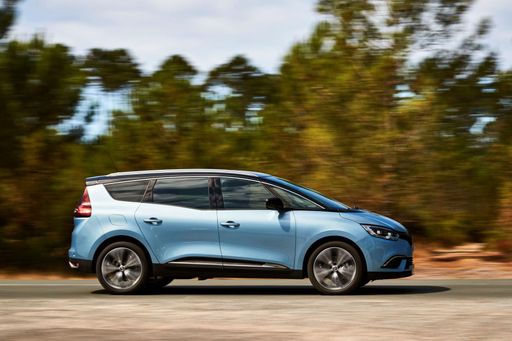 @ Renault
@ Renault
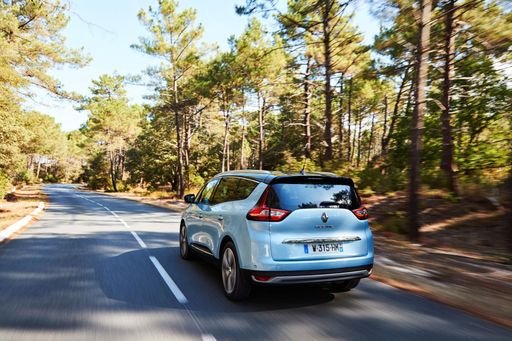 @ Renault
@ Renault
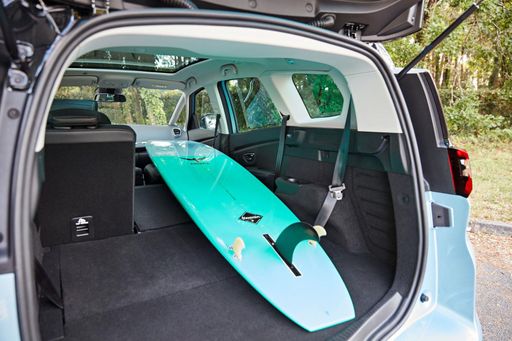 @ Renault
@ Renault
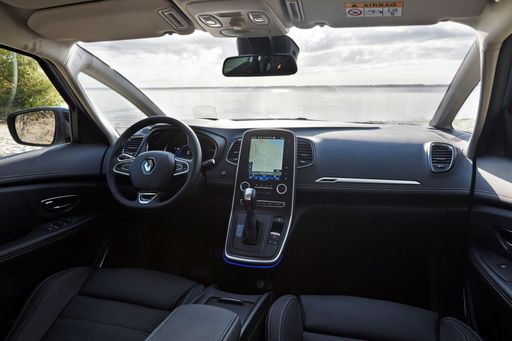 @ Renault
@ Renault
Renault Scénic vs Tesla Model 3: A Clash of Electric Titans
As electric vehicles (EVs) surge in popularity, potential buyers often find themselves at a crossroads, selecting between various innovative options available in the market. Two prominent contenders worth examining are the Renault Scénic and the Tesla Model 3. This article delves into a comprehensive comparison of these two electric vehicles, analyzing their technical aspects, innovations, and overall driving experience.
Body and Design
The Renault Scénic is classified as an SUV, featuring an attractive and functional design. Measuring 4470 mm in length and 1864 mm in width, the Scénic presents a spacious interior coupled with a trunk capacity of 545 liters — ideal for families or adventurous outings.
In contrast, the Tesla Model 3, known as a hatchback, embodies a sleek and aerodynamic profile. Slightly longer at 4720 mm and narrower at 1850 mm, the Model 3 is designed to maximize efficiency. Its trunk capacity is notably larger at 594 liters, providing additional storage space for daily use or long drives.
Performance and Powertrains
When it comes to performance, the Renault Scénic offers two versions: one delivering 170 HP and the other 220 HP, with a torque of 280 Nm and 300 Nm, respectively. With an acceleration time of 8.6 seconds for the lower-powered variant and 7.9 seconds for the stronger variant, the Scénic is well-suited for urban driving and moderate highway use. Its maximum speed ranges from 150 km/h to 170 km/h.
The Tesla Model 3, on the other hand, boasts a more impressive array of powertrain options. With power outputs ranging from 283 HP to a staggering 460 HP, alongside torque figures reaching up to 723 Nm, the Model 3 exhibits a dynamic performance. Acceleration from 0 to 100 km/h varies from 6.1 seconds to an astounding 3.1 seconds, depending on the variant, and it can achieve top speeds between 201 km/h and 262 km/h.
Battery and Range
The Renault Scénic showcases an efficient electric range, offering 420 km to 598 km on a single charge, depending on the version. Its energy consumption ranges between 16.7 kWh/100 km to 17.6 kWh/100 km, making it a reliable choice for daily commutes and weekend getaways.
In comparison, the Tesla Model 3 excels with higher electric ranges between 513 km and 702 km. The energy consumption is also lower, ranging from 12.5 kWh/100 km to 16.5 kWh/100 km across its variants. This efficiency, coupled with Tesla's extensive Supercharger network, enhances the convenience of long-distance travel.
Technology and Innovations
Renault has equipped the Scénic with modern technology and an intuitive dashboard, featuring a user-friendly infotainment system. The spacious interior is designed with comfort in mind, emphasizing family-friendly features such as ample legroom and various storage compartments.
The Tesla Model 3 raises the bar significantly with its advanced technology. The highlight is the expansive touchscreen interface, which controls most vehicle functionalities. Additionally, Tesla's Autopilot feature provides semi-autonomous driving capabilities, offering an advanced level of safety and convenience on the road.
Conclusion: Which EV Reigns Supreme?
Ultimately, your choice between the Renault Scénic and Tesla Model 3 hinges on your priorities. If you value spaciousness, family-friendly features, and a more conventional SUV feel, the Scénic presents an appealing option. However, for driving enthusiasts seeking performance, cutting-edge technology, and an extended electric range, the Tesla Model 3 stands out as an exceptional choice.
Both vehicles represent significant advancements in the evolution of electric mobility, and each draws a distinct line between function and innovation. As the electric vehicle market continues to evolve, potential buyers have more options than ever, making it an exciting time for the automotive industry.

|

|
|
|
|
Costs and Consumption |
|
|---|---|
|
Price
34300 - 50100 £
|
Price
34600 - 44000 £
|
|
Consumption L/100km
-
|
Consumption L/100km
-
|
|
Consumption kWh/100km
13.2 - 16.7 kWh
|
Consumption kWh/100km
16.6 - 17.5 kWh
|
|
Electric Range
513 - 702 km
|
Electric Range
420 - 598 km
|
|
Battery Capacity
62 - 79 kWh
|
Battery Capacity
-
|
|
co2
0 g/km
|
co2
0 g/km
|
|
Fuel tank capacity
-
|
Fuel tank capacity
-
|
Dimensions and Body |
|
|---|---|
|
Body Type
Hatchback
|
Body Type
SUV
|
|
Seats
5
|
Seats
5
|
|
Doors
5
|
Doors
5
|
|
Curb weight
1822 - 1929 kg
|
Curb weight
1822 - 1927 kg
|
|
Trunk capacity
594 L
|
Trunk capacity
545 L
|
|
Length
4720 - 4724 mm
|
Length
4470 mm
|
|
Width
1850 mm
|
Width
1864 mm
|
|
Height
1431 - 1440 mm
|
Height
1571 mm
|
|
Payload
303 - 333 kg
|
Payload
514 - 518 kg
|
Engine and Performance |
|
|---|---|
|
Engine Type
Electric
|
Engine Type
Electric
|
|
Transmission
Automatic
|
Transmission
Automatic
|
|
Transmission Detail
-
|
Transmission Detail
-
|
|
Drive Type
Rear-Wheel Drive, All-Wheel Drive
|
Drive Type
Front-Wheel Drive
|
|
Power HP
283 - 627 HP
|
Power HP
170 - 220 HP
|
|
Acceleration 0-100km/h
3.1 - 6.1 s
|
Acceleration 0-100km/h
7.9 - 8.6 s
|
|
Max Speed
201 - 262 km/h
|
Max Speed
150 - 170 km/h
|
|
Torque
420 - 660 Nm
|
Torque
280 - 300 Nm
|
|
Number of Cylinders
-
|
Number of Cylinders
-
|
|
Power kW
208 - 461 kW
|
Power kW
125 - 160 kW
|
|
Engine capacity
-
|
Engine capacity
-
|
General |
|
|---|---|
|
Model Year
2023 - 2024
|
Model Year
2025
|
|
CO2 Efficiency Class
A
|
CO2 Efficiency Class
A
|
|
Brand
Tesla
|
Brand
Renault
|
Tesla Model 3
Introduction to the Tesla Model 3
The Tesla Model 3 has quickly become a beacon of innovation in the world of electric vehicles (EVs), embodying a perfect blend of performance, technology, and sustainability. Known for redefining the electric car experience, the Model 3 stands as a testament to Tesla's commitment to pushing the boundaries of automotive design and engineering.
Design and Build
With its sleek fastback silhouette, the Tesla Model 3 is not only visually captivating but also aerodynamically efficient. Measuring at 4720 mm in length, 1850 mm in width, and 1441 mm in height, it optimally combines aesthetics with functionality. The Model 3 boasts a 594-litre boot space, offering ample room for everyday storage needs. Built with environmental efficiency in mind, its CO2 efficiency rating stands proudly at a perfect A, making it an ideal choice for the eco-conscious driver.
Powertrain and Performance
Under the bonnet, the Model 3 offers a diverse range of powertrains. It is available in both rear-wheel drive (RWD) and all-wheel drive (AWD) options, catering to different driving preferences. The electric motors deliver a remarkable power output ranging from 283 to 460 PS, translating to 208 to 338 kW. Depending on the variant, the Model 3 can accelerate from 0 to 100 km/h in a staggering 3.1 to 6.1 seconds. With a top speed between 201 and 262 km/h, the Model 3 promises an exhilarating driving experience.
Battery and Range
The Model 3 is equipped with a robust battery pack, available in capacities ranging from 62 to 79 kWh. This ensures an impressive electric range of 513 to 629 km on a single charge, catering perfectly to both city drivers and those who frequently embark on long-distance journeys. The energy consumption is between 13.2 to 16.5 kWh per 100 km, showcasing Tesla's efficiency in engineering cutting-edge EV technology.
Technological Innovations
The interior of the Model 3 is where technology takes centre stage. With its state-of-the-art autopilot feature, semi-autonomous driving is not just a promise but a reality. The vehicle continually updates over-the-air, ensuring that the software is always up-to-date with the latest features and improvements. Furthermore, the minimalist interior design, accentuated by a massive central touchscreen display, epitomises modernity and enhances the user experience with intuitive controls and navigation.
Cost Considerations
Given its advanced features and performance capabilities, the Model 3's price point ranges from €42,490 to €58,490. Monthly operating costs are estimated to be between €1,073 and €1,397, with per-kilometre costs between 42.9 and 55.9 cents, making it a competitively priced option within the premium EV market segment.
Conclusion
The Tesla Model 3 continues to lead the charge in the electric revolution, offering a compelling package of performance, innovation, and sustainability. For anyone seeking a modern, efficient, and technologically advanced vehicle, the Model 3 deserves serious consideration. With Tesla's groundbreaking vision and innovative engineering, this vehicle is not merely an investment in cutting-edge technology but also in a sustainable future.
Renault Scénic
Introducing the All-New Renault Scénic: A Leap into the Future
The Renault Scénic has long been a family favourite, and with its latest iteration, it offers a blend of advanced technology, impressive performance, and eco-friendly credentials. The 2024 model year makes a grand entrance with its electric-only range, showcasing the brand's commitment to a sustainable future.
Powerful Performance Range
The latest Renault Scénic range offers two power specifications to cater to different driving needs. With power outputs ranging from 170 to 220 PS, and a torque between 280 and 300 Nm, there's plenty of punch to ensure a dynamic driving experience. Choose the variant that suits your lifestyle, whether it's the Comfort Range with a satisfying 420 km electric range or the Long Range capable of 598 km on a full charge.
Sleek Design and Comfort
Renault has effectively transformed the Scénic into a suave SUV, integrating both style and functionality. It measures 4470 mm in length, 1864 mm in width, and stands 1571 mm tall – dimensions that promise ample interior space while maintaining a sporty silhouette. The five-seat configuration ensures comfort, with a spacious 545-litre boot capacity making it ideal for family trips or weekend getaways.
Efficiency at Its Core
With an efficiency of 16.7 to 17.6 kWh per 100 km, the Renault Scénic provides an excellent balance of performance and economy. On top of that, it maintains a CO2 efficiency class of A, delivering 0 g/km, which is a testament to its dedication to reducing environmental impact. Furthermore, the monthly cost ranges from €1021 to €1172, and €0.408 to €0.469 per km, ensuring the Scénic is economically sensible as well.
Innovative Technology Package
The Renault Scénic is packed with innovative technology to enhance the driving experience. The standard automatic transmission is complemented by a reduction gearbox, ensuring smooth and responsive acceleration. Multiple trim levels, including Evolution, Techno, Esprit Alpine, and Iconic, offer a variety of features to match your preferences.
Safety and Practicality
Safety is paramount in the Scénic, with its robust build and suite of advanced safety features. The model’s design also accounts for practicality, with a payload capacity ranging from 514 to 518 kg, making it fit for daily errands and heavy loads alike. Additionally, its top speed ranges up to 170 km/h, providing peace of mind on motorways.
Concluding Thoughts
Renault has truly pushed the boundaries with the new Scénic, creating an all-electric vehicle that marries sophistication with practicality. Whether navigating urban landscapes or exploring the open road, the Scénic delivers on both style and substance for the discerning eco-conscious driver.
What drive types are available for the Tesla Model 3?
Available configurations include Rear-Wheel Drive or All-Wheel Drive.
The prices and data displayed are estimates based on German list prices and may vary by country. This information is not legally binding.
